#changpa
Text
The magic of Ladakh, in Winter
*NEW on the BLOG*
The magic of Ladakh, in Winter.
Read about our travels to the land of passes - Ladakh, in winter.

View On WordPress
#buddhism#Buddhist#changpa#Charang monastery#frozen#Hanle Monastery#Himalaya#HimalayanChandraTelescope#Himalayas#Holiday in Himalayas#ice skating#icehockey#India#india travel#Indian#Kiang#Ladakh#Ladakh travel#Landscape#Mountain#Nature#offbeat#offbeat travel#Photography#scenery#snow#sustainable#sustainabletourism#telescope#Thikse Monastery
1 note
·
View note
Photo

The Rumtse to Tsomoriri Trek 2023 One of the most beautiful hiking adventures in the region of Ladakh. A high altitude trek which takes you through the spectacular Changthang region home to Changpa nomads and their hundreds of Pashmina goat and yaks. An exceptional trek going through numerous high Passes above 5000m. Plan this hiking trail as your next mountain adventure for the season. If you would like to join a group, check for our fixed departure dates. . . #rumtsetsomoriritrek #rumtsetotsomoriri #rumtsetotsomoriritrek #rumtsetokorzok #rumtsetsomoriri #tsokar #rumtse #tsomoriri #changthang #changpa #landscape #kyamar #mandalchanla #doksa #yalungnyaula #hikingadventures #remotetreks #trekkinginladakh #trekkinginchangthang #rupshu #trekkinginindia #trekkinginindianhimalayas #trekwithhippieinhills #trekwithlocals #adventurasindia #himalayantreks #dekhoapnadesh #hippieinhills #ladakh (at Ladakh, India) https://www.instagram.com/p/CqFFACSJO-b/?igshid=NGJjMDIxMWI=
#rumtsetsomoriritrek#rumtsetotsomoriri#rumtsetotsomoriritrek#rumtsetokorzok#rumtsetsomoriri#tsokar#rumtse#tsomoriri#changthang#changpa#landscape#kyamar#mandalchanla#doksa#yalungnyaula#hikingadventures#remotetreks#trekkinginladakh#trekkinginchangthang#rupshu#trekkinginindia#trekkinginindianhimalayas#trekwithhippieinhills#trekwithlocals#adventurasindia#himalayantreks#dekhoapnadesh#hippieinhills#ladakh
0 notes
Photo

Merp is very relaxed 😺 #catsofinstagram #Hipstamatic #Changpa #FloridaMan1911 (at South of Market, San Francisco) https://www.instagram.com/p/ClXBbnYyx3S/?igshid=NGJjMDIxMWI=
0 notes
Photo

#nowplaying #graceland #paulsimon #steverecords #vinyl #Hipstamatic #Changpa #LouisXIVInfrared (at Benton, Newcastle upon Tyne) https://www.instagram.com/p/CgaLmxpLBAX/?igshid=NGJjMDIxMWI=
0 notes
Text
Meeting the Changpa Nomads: Experiencing Nomadic Life in Spiti Valley
Nestled amidst the majestic Himalayas, Spiti Valley is a land of unparalleled beauty and cultural richness. As one explores the enchanting landscapes and interacts with the local communities, there's an opportunity to delve deep into the heart of this region's unique way of life. Recently, I embarked on a journey to Spiti Valley, where I not only got a chance to witness the breathtaking scenery but also had the privilege to meet the Changpa nomads, who have been preserving their nomadic lifestyle for generations. Join me in this immersive adventure as we explore the mesmerizing Spiti Valley, and along the way, discover some fascinating Spiti Valley tour packages Spiti Valley Tour Packages that can make your trip equally remarkable. Additionally, for those interested in the local culture and crafts, we'll also touch upon some great places to shop in Spiti Valley Places To Shop In Spiti Valley.
A Glimpse into the Nomadic Lifestyle

The Changpa people are a semi-nomadic Tibetan ethnic group that have called the high-altitude regions of Ladakh and the Spiti Valley their home for centuries. These nomads are primarily pastoralists, relying on their herds of yaks, goats, and sheep to sustain their way of life. The seasonal migration patterns of the Changpa are a well-choreographed dance with the changing seasons – they move to higher pastures during the warm months and descend to lower altitudes as winter approaches.
Embracing the Changpa Hospitality
As I embarked on a journey to experience this unique way of life, I was welcomed with open arms by the Changpa nomads. Their hospitality knows no bounds, as they shared their tents, meals, and stories with me. The traditional tents, known as 'rebo,' are woven with yak hair and are surprisingly warm, even in the chilly mountain nights. Sitting around a crackling fire, I had the privilege of listening to tales of their ancestral traditions, the challenges they face in this modern age, and their unwavering bond with their animals.
The Rhythm of Nomadic Life

A day in the life of a Changpa nomad is a symphony of simple yet essential tasks. The crack of dawn marks the beginning of a routine that revolves around the well-being of their herds. Milking the yaks and goats is a daily ritual, producing the precious milk that is transformed into butter, cheese, and other sustenance. The nomads' intricate knowledge of the land is awe-inspiring – they can read the signs of nature to predict weather changes, locate water sources, and find the best grazing grounds.
Preserving Traditions in a Changing World
While the Changpa nomads have embraced certain aspects of modernity, such as solar panels to power their tents and some communication devices, they are fiercely determined to preserve their cultural heritage. Their traditional clothing, adorned with intricate designs and vivid colors, is a testament to their identity. Yet, like many indigenous communities, they face the challenges of a changing world – climate change affecting their grazing lands, economic pressures, and the allure of urban life drawing the younger generation away.
The Dance of Seasons: A Nomad's Calendar

In the embrace of the Spiti Valley's rugged terrain, the Changpa nomads have honed a profound understanding of the changing seasons. Their migratory lifestyle isn't just about survival; it's a harmonious dance with nature's rhythm. As spring breathes life into the barren landscape, the Changpa pack their belongings and guide their herds towards the alpine meadows. Here, wildflowers carpet the ground, and the air is tinged with the aroma of fresh grass.
Summer brings with it a bustling atmosphere as the nomads make the most of the warmer months. The yaks and goats thrive on the lush pastures, their milk flowing abundantly. During these months, the Changpa come together, establishing temporary settlements where a sense of community blossoms. Children play and learn alongside their parents, absorbing age-old skills and wisdom that textbooks could never teach.
With the advent of autumn, the Changpa begin their descent to lower altitudes. The landscape changes hues, painting the valley with warm shades of gold and crimson. The air turns crisper, hinting at the approaching cold. The nomads work diligently, gathering provisions for the coming winter. Their connection to the earth is tangible as they store food, prepare wool for crafting warm clothing, and reinforce their tents against the impending snow.
Winter is a time of quiet reflection and resilience. The Changpa retreat to their winter settlements, nestled in valleys where the snow offers insulation against the biting cold. Life slows down, and the focus turns inward. Stories are shared around fires, and traditions are passed down through generations. The yaks and goats are carefully tended, their thick fur providing both sustenance and warmth.
Lessons Learned and Shared

My time among the Changpa nomads was a humbling experience that left an indelible mark on my soul. Their harmonious coexistence with nature, their resourcefulness, and their unbreakable bonds with their animals offer profound lessons for the modern world. As I bid farewell to the rebo and the warmth of the campfire, I carried with me not just memories but a renewed perspective on what it means to truly live in harmony with the environment.
Meeting the Changpa nomads was an invitation to step outside the confines of our modern lives and immerse ourselves in a reality that is both timeless and illuminating. Their story isn't just about survival – it's a testament to the indomitable human spirit, the art of living in harmony with nature, and the beauty of traditions that transcend time. As the wind carried whispers of their songs and laughter, I left the Spiti Valley with a heart full of gratitude and a determination to carry their stories forward, so they may inspire others as they inspired me.
0 notes
Text
Discover the Tranquil Beauty of Tso Moriri Lake in Ladakh
Nestled in the lap of the Himalayas, Ladakh is a region renowned for its stunning landscapes, spiritual serenity, and vibrant culture. Among its many treasures, the Shanti Stupa in Ladakh and Tso Moriri Lake in Ladakh stand out as two of the most captivating attractions. These landmarks not only offer breathtaking beauty but also provide a deep sense of peace and connection with nature and spirituality.

The Enchanting Tso Moriri Lake
Tso Moriri Lake, also known as "Mountain Lake," is a high-altitude lake located in the Changthang region of Ladakh. Situated at an altitude of approximately 4,522 meters (14,836 feet), it is the largest high-altitude lake in India entirely within Indian territory. The lake is about 28 kilometers long and 8 kilometers wide, surrounded by snow-capped mountains that enhance its ethereal beauty.
The journey to Tso Moriri Lake is an adventure in itself, taking travelers through some of the most remote and rugged terrains in Ladakh. The drive from Leh to Tso Moriri, which takes about 7-8 hours, passes through picturesque villages, high mountain passes, and vast plains dotted with nomadic camps. The route offers stunning views of the Himalayas, with every turn revealing a new aspect of the region's natural beauty.
A Haven for Wildlife
Tso Moriri Lake is not just a feast for the eyes; it is also a haven for wildlife enthusiasts. The lake and its surrounding wetlands are designated as a Ramsar site, recognizing their importance as a vital habitat for various species of birds and other wildlife. Birdwatchers can spot a variety of migratory birds, including the Black-necked Crane, Bar-headed Geese, and the Great Crested Grebe. The area is also home to several species of mammals, such as the Tibetan Gazelle, the Kiang (Tibetan Wild Ass), and the Snow Leopard, making it a biodiversity hotspot.

The Spiritual Connection
For those seeking a spiritual experience, Tso Moriri Lake holds a special significance. The tranquil waters of the lake are considered sacred by the local population, and the surrounding landscape exudes a sense of peace and solitude. The lake is also associated with the Changpa nomads, who have roamed these high-altitude regions for centuries, living in harmony with the harsh but beautiful environment.
The spirituality of the region is further enhanced by the presence of the nearby Korzok Monastery, one of the oldest monasteries in Ladakh, dating back over 500 years. This monastery, perched on the banks of Tso Moriri, offers a glimpse into the rich cultural and religious heritage of the region. Visitors can participate in the morning prayers, explore the monastery’s ancient artifacts, and soak in the serene atmosphere that pervades this sacred place.
Preserving the Pristine Beauty
While Tso Moriri Lake is a popular tourist destination, it remains relatively untouched and pristine compared to other high-altitude lakes in the region. This is due in part to its remote location and the efforts of local communities and authorities to preserve its natural beauty and ecological balance. Visitors are encouraged to respect the fragile environment, adhere to responsible tourism practices, and ensure that the lake and its surroundings remain unspoiled for future generations.

Planning Your Visit
A visit to Tso Moriri Lake is best planned during the summer months, from June to September, when the weather is relatively mild and the roads are accessible. During winter, the region experiences extreme cold, and the lake often freezes over, making travel challenging. Accommodations near the lake range from basic guesthouses to tented camps, offering a range of options for travelers.
In conclusion, Tso Moriri Lake in Ladakh is a destination that offers a unique blend of natural beauty, wildlife, and spirituality. Along with the iconic Shanti Stupa in Ladakh, it provides visitors with an opportunity to experience the profound serenity and majesty of this Himalayan wonderland. Whether you are an adventurer, a nature lover, or a spiritual seeker, Tso Moriri Lake is sure to leave an indelible mark on your heart and soul.
0 notes
Text
Bike on Rent Chandigarh to Leh
Sharp Time Travels helps you by providing Bike on Rent Chandigarh to Leh. Imagine going to bed under a starlit sky brightened up by the milky way at Hanle. Imagine riding your bike with the Changpa nomads in Changthang. Imagine looking over the vast expanse of Zanskar from the top of the Zangla Fort.
0 notes
Text


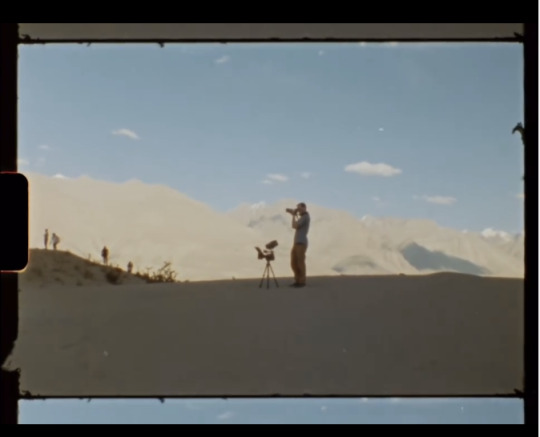
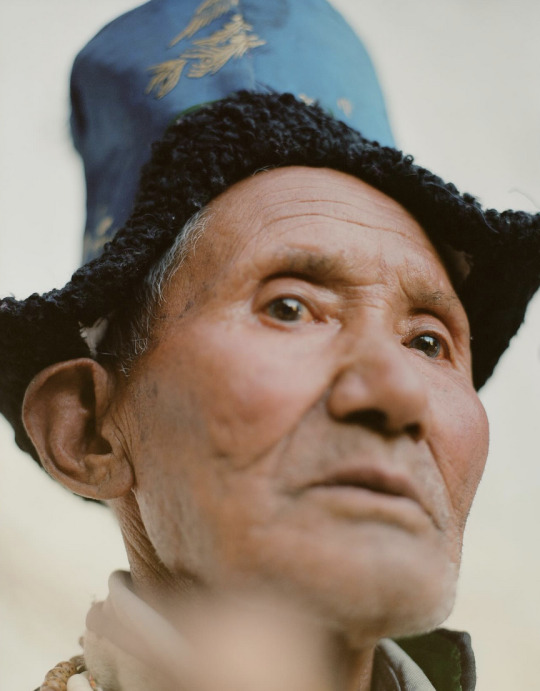
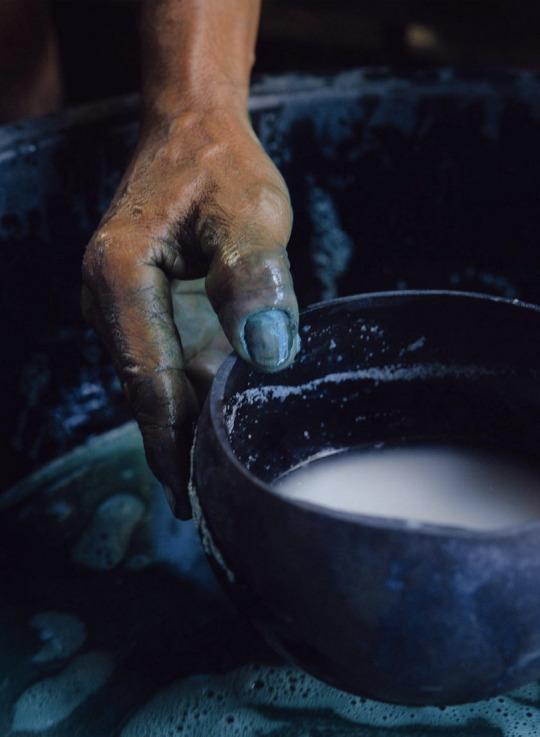

by P i e A e r t s | because.people.matter
view: journey
images:
series of photographs for @belmond shot in Botswana // @belmondsafaris #theartofbelmond
resilient Changpa ladies in Ladakh
still from Ladakh film expedition
Silk Road memoirs pt 3
nestled in the pristine jungles of central bali, in the midst of a lush indigo plantation lies a Japanese-inspired indigo-dyeing studio. An artisanal approach to the age-old art of natural indigo dyeing, true craftsmanship, run by Sebastian Message, his wife Ayu Pupa and their team. Work for @tiantaru
india archive pt 5
1 note
·
View note
Text
Discover the Mystique of Pangong Lake
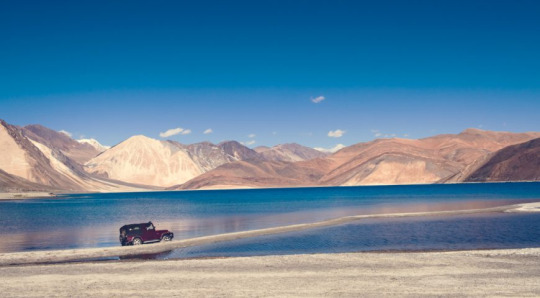
Pangong Tso, nestled amidst the majestic Himalayas, beckons with its ethereal beauty and serene tranquility. As your trusted guide, Yashvi Tours & Travels invites you to unveil the mystique of this enchanting lake, leaving you with memories etched in the hues of turquoise. Ready to embark on this unforgettable journey? Book your Ladakh trip today and let us craft the perfect Pangong adventure for you!
Beyond Breathtaking
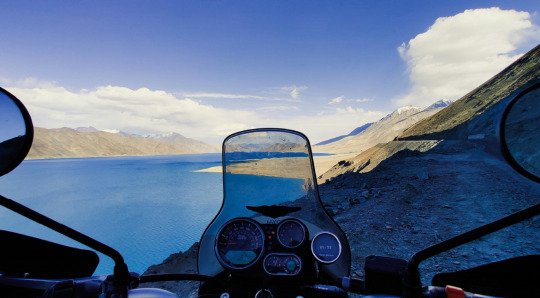
Imagine a canvas painted with shades of azure, reflecting snow-capped peaks in its crystal-clear embrace. This is Pangong Tso, where the air whispers tales of ancient mysteries and the silence speaks volumes. Witness the mesmerizing transformation of its hues as sunlight dances on the water, creating a kaleidoscope of color. Be mesmerized by the starlit spectacle at night, where the Milky Way paints the sky in a celestial dance. Keep your eyes peeled for playful marmots and soaring birds, adding to the symphony of nature’s wonders.
Journeying Beyond the Lake
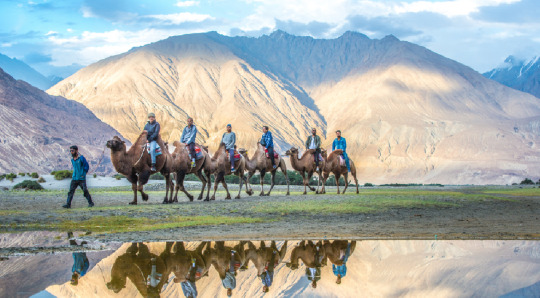
We curate itineraries that unlock the secrets beyond the lake’s edge. Immerse yourself in the vibrant culture of the Changpa people in Spangmik Village. Conquer the world’s third highest motorable pass, Chang La, and marvel at the panoramic vistas that leave you breathless. Explore the bustling markets and ancient monasteries of Leh, and discover the hidden gem of Nubra Valley, known for its sand dunes and unique Bactrian camel rides.
Unveiling the Season’s Embrace
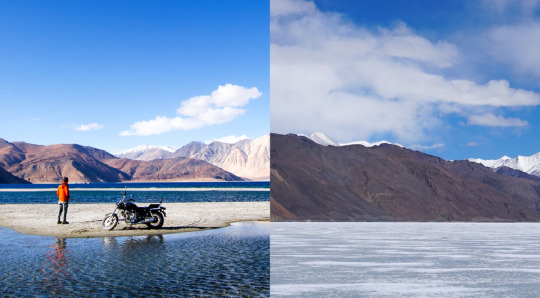
Pangong Tso unveils its magic throughout the year, each season offering a unique brushstroke:
June to September: Pleasant weather paints the landscape vibrant, ideal for outdoor adventures and sightseeing.
January to February: Witness the lake frozen in its entirety, a surreal winter wonderland. Embrace the cold and limited accessibility for a truly unique experience.
Why Should Your Soul Seek Pangong?

Pangong Lake offers a sanctuary for weary souls seeking solace amidst nature’s grandeur. Whether you’re an avid photographer capturing the kaleidoscope of colors or a spiritual seeker meditating by the tranquil shores, Pangong Lake captivates the hearts of all who venture here. Its remote location and untouched beauty offer a rare opportunity to disconnect from the chaos of modern life and reconnect with the essence of existence.
Tips for a Seamless Journey:
Yashvi Tours & Travels ensures your Pangong adventure is smooth sailing:
Acclimatize wisely: Respect the high altitude. Take it slow, stay hydrated, and avoid strenuous activities on arrival.
Pack for the elements: Be prepared for chilly nights and fluctuating temperatures. Pack layers, sunscreen, sunglasses, a hat, and sturdy shoes.
Respect the environment: Leave no trace behind and dispose of waste responsibly.
Activities to Stir Your Soul
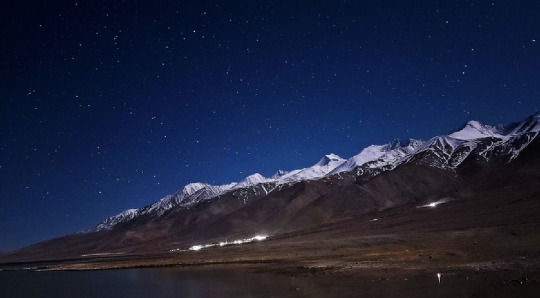
Pangong Tso isn’t just a destination; it’s a blank canvas waiting for you to paint your own adventure. Immerse yourself in the soul-stirring activities that capture the essence of this magical place:
Dance with the Stars: On a clear night, let the majestic Himalayas unveil their true magic. As darkness descends, the sky explodes with a million celestial diamonds, offering a front-row seat to the Milky Way’s mesmerizing dance. This is a moment etched in eternity, a memory you’ll carry long after the stars fade.
Hike into Nature’s Embrace: Lace up your boots and feel the adrenaline rush as you embark on a trek through the rugged, yet breathtaking, mountains surrounding Pangong Tso. With each step, you’ll breathe in the crisp Himalayan air, conquer challenging terrains, and be rewarded with panoramic vistas that leave you speechless. The Himalayas aren’t just scenery; they’re an experience that seeps into your soul.
Capture the Enchantment: Unleash your inner artist and translate the lake’s ethereal beauty onto your lens. Let every click immortalize a moment – the play of sunlight on the turquoise water, the snow-capped peaks mirroring in its depths, or the vibrant hues that paint the sky at sunrise and sunset. These photographs won’t just be souvenirs; they’ll be portals back to the serenity you discovered at Pangong Tso.
Find Inner Peace: Seek solace in the tranquility of the lake. Unfurl your yoga mat on the serene shores and let the gentle breeze and rhythmic lapping of water lull you into a state of deep relaxation. Or, practice meditation, merging your breath with the vastness of the landscape and finding yourself amidst the majestic silence. This is more than just an activity; it’s a journey of self-discovery and rejuvenation.
Glide in Tranquility: Embark on a boat ride across the mirror-like surface of the lake. Feel the gentle sway of the vessel as it carves through the crystal-clear water. Let the sun warm your face, the cool breeze caress your hair, and the silence wash over you. This is a moment of pure serenity, a chance to disconnect from the world and reconnect with yourself.
These are just a few ways to paint your Pangong Tso adventure with vibrant hues.
Conclusion
Embark on an extraordinary journey with Yashvi Tours & Travels to Pangong Lake, where every moment surpasses expectations. Our local expertise ensures a seamless experience, from comfortable accommodations to handling permits and logistics. Safety and security are paramount, as we provide experienced guides and promote responsible tourism.
Let us guide you to the heart of Pangong Tso, where memories are made to last a lifetime. With meticulously crafted itineraries and personalized service, we guarantee joy, wonder, and discovery at every turn. Book your Ladakh travel today and discover the timeless beauty of Pangong Lake with Yashvi Tours & Travels by your side.
Article Source: https://www.yashvitours.com/discover-the-mystique-of-pangong-lake/
0 notes
Text
A Traveler's Guide to Adventure with Leh Ladakh Tour Packages

Dreaming of high-altitude adventures? Discover the amazing beauty of the region of Leh Ladakh. Going for custom Leh Ladakh tour packages will offer you a great journey. It will help you make your trip unforgettable. A trip to this place will offer you a lot of happy memories.
Leh Ladakh is located between the peaks of Himalayas. This region is the ideal destination for those who want a thrilling experience. Even nature enthusiasts can have a great time in Leh Ladakh. Today, we will guide you through Leh Ladakh tour packages offered by expert tour operators in India. You can expect a lot of adventure and thrill around this area. We will also explore the best locations so that you do not miss out on the fun.
1. Leh Ladakh's Unique Landscape
Leh Ladakh is also called the Land of High Passes. This place has a beautiful landscape. It has towering mountains and stark deserts. And the pristine lakes create a beautiful view for nature lovers. Leh Ladakh tour packages allow you to explore the beautiful region. You can travel through the area and have a lovely view at every turn. This journey itself becomes even more adventurous as you travel through the rugged area. You will cross many high-altitude passes that will offer you an amazing view of this place.
2. Discover Ladakh's Spiritual Essence
Ladakh is aesthetically pleasing. It is mainly because of its generally sparse population. This place has lots of ancient temples. However, you will also enjoy the region's rich cultural heritage. With a specially created Leh Ladakh tour itinerary, you can experience the trip to the fullest. You will experience tranquility and spirituality of these monastic marvels. You will experience the unique mix of Buddhist and local customs in Ladakh. And for that, you can attend the festivals and participate in the rituals. This voyage transcends mere travel and entails a profound exploration of diverse cultures.
3. Adventure Activities in Leh Ladakh
If you are looking for an exciting trip, Leh Ladakh is the best place to go. You can do a lot of exciting things in this area. You can go for white-water rafting in the Zanskar River. And then go mountain biking on rough terrain. Those who love adventure, can fill their days with hiking in the Markha Valley. You can camp under the stars. You may ride on the world's highest motorable road at KhardungLa. A Leh Ladakh trip is not like any other journey, it is a trip for a thrilling experience.
4. Pangong Lake at High Altitude
Pangong Lake is the main attraction of Ladakh. It is located at an elevation of 4,350 meters. This is a true beauty. It offers a changing shade of blue against the tall mountains. You can spend some time there and soak in the beauty of this place. A lot of Leh Ladakh tour options include a trip to this pristine lake. Here, visitors can see its ethereal beauty and enjoy the peace and quiet of the area. Take a boat ride on Pangong Lake. It's not just a trip; it's an amazing experience with the beauty of nature.
5. Encounters with Ladakhi Tribes
The nomadic society of Ladakh makes your trip more interesting. A lot of Leh Ladakh tour packages include time to connect with local groups like the Changpas. You can see how they live, eat delicious local food, and learn about how simple and strong Ladakhi societies are. These meetings give us a unique look into a way of life that is shaped by the harsh but beautiful surroundings that surround them.
Embark on Your Leh Ladakh Journey with Swan Tours for Unforgettable Memories
When it comes to excitement, Leh Ladakh is a great example of how strong people are and how beautiful nature is. As one of the best tour operators in India, Swan Tours knows how appealing this high-altitude haven is. That's why we make Leh Ladakh tour packages that really show what this special place is all about. Our packages offer a full experience by combining nature, excitement, and culture in a way that doesn't feel forced. We want to make your Leh-Ladakh odyssey as affordable as possible, and we ask you to join us. Every moment will be an adventure waiting to happen. Let Swan Tours show you the amazing scenery and thrills that can't be found anywhere else in the world.
0 notes
Text
Pashmina Shawl
Introduction
Pashmina shawls, also known as cashmere shawls, are exquisite and luxurious garments that have a long and illustrious history. Derived from the fine under fleece of the Himalayan mountain goat called Chyangra (Capra Hircus), these shawls have been woven for centuries in the Kashmir region, which includes territories administered by India, Pakistan, and China. The name "Pashmina" originates from the word "Pashm," referring to the soft and warm wool produced by these majestic goats living at high altitudes in the Himalayas .
Historical Significance of Pashmina Shawls
The story of Pashmina shawls can be traced back to the ancient times when they were revered as a symbol of royalty and nobility. During the Mughal Empire, Pashmina shawls were presented as prestigious gifts, and they became a part of the khilat ceremony, where members of the court were honored with robes made of Pashmina wool. These luxurious shawls also became popular in Europe, especially in France, thanks to the enthusiastic use by Empress Joséphine, the wife of Napoleon Bonaparte . The shawls' association with the French elite elevated their status as a fashion icon.
Production Process of Pashmina Shawls
The production of Pashmina shawls is a labor-intensive and intricate process, involving the delicate handling of the precious Pashmina wool. Each winter, the goats naturally shed their undercoat, and the Changpa nomadic people living in the Ladakh region of India collect the fine wool through combing . The raw Pashmina is then transported to Kashmir, where skilled artisans carry out the rest of the production process.
In the old district of Srinagar, Kashmir, the combing, spinning, weaving, and finishing of Pashmina shawls are traditionally done by hand. It takes around 180 hours to create a single piece of these exceptional shawls . The craftsmanship involved in producing Pashmina shawls is a testament to the skill and dedication of the artisans who have inherited this art from their ancestors.
Terminology and Characteristics of Pashmina
The term "Pashmina" is sometimes misused or misunderstood, leading to confusion about its true nature. Pashmina is any wool under 19 microns in thickness, while true Pashmina is around 12-14 microns thick, making it six times finer than human hair . It is lighter and more delicate than regular cashmere wool, and when blended with silk, it creates a luxurious fabric that is highly prized in the western world.
The Importance of BIS Certification
In recent times, the popularity of Pashmina shawls has led to fraudulent marketing practices where products of inferior quality were falsely labeled as Pashmina, causing financial losses for traditional artisans and nomads who produce genuine Pashmina shawls . To protect the livelihoods of local craftsmen and preserve the integrity of this traditional craft, the Bureau of Indian Standards (BIS) has introduced a certification process to identify and label authentic Pashmina shawls .
Conclusion
The history and production of Pashmina shawls are deeply intertwined with the culture, heritage, and craftsmanship of the Kashmir region. These luxurious shawls have stood the test of time, evolving from symbols of royalty to coveted fashion accessories. The labor-intensive and meticulous production process, combined with the intrinsic beauty and warmth of Pashmina wool, ensures that these shawls remain timeless treasures cherished by people worldwide.
0 notes
Photo

The Classic Trans-Himalayan expedition of Parang la (5580m). A crossover trek of a high Himalayan Pass connecting the arid region of Spiti in Himachal Pradesh to Changthang in eastern Ladakh. One of the most sought out remote treks in Indian Himalaya. With multiple river crossings, camping in the wild, walking through loose scree; the trail throws multiple challenges to keep you wary of itself. A hiking trail which has everything a Himalayan Trek has to offer. Wildlife, Culture, Nature; everything that can make this trek your dream trek. Come, join us this summer. Our first fixed departure is scheduled to leave on 20th of July from Manali, Himachal Pradesh. For customisation or a private trek, please write to us on [email protected] . . . #parangla #paranglatrek #paranglatrek2023 #parangrange #spiti #ladakh #changthang #korzok #tsomoriri #piti #changpa #rupshu #remotetreks #remotetrekking #classictrek #himalayantrek #trekkinginhimalayas #trekkinginindia #trekkinginspiti #trekkinginladakh #easternladakh #trekkinginhimachal #adventureofalifetime #hikingadventures #trekwithhippieinhills #trekwithlocals #explorewithhippieinhills #incredibleindia #dekhoapnadesh #hippieinhills (at Parang La) https://www.instagram.com/p/Co1SRzppIxv/?igshid=NGJjMDIxMWI=
#parangla#paranglatrek#paranglatrek2023#parangrange#spiti#ladakh#changthang#korzok#tsomoriri#piti#changpa#rupshu#remotetreks#remotetrekking#classictrek#himalayantrek#trekkinginhimalayas#trekkinginindia#trekkinginspiti#trekkinginladakh#easternladakh#trekkinginhimachal#adventureofalifetime#hikingadventures#trekwithhippieinhills#trekwithlocals#explorewithhippieinhills#incredibleindia#dekhoapnadesh#hippieinhills
0 notes
Video
SKU: KUOJ180 An exquisite straight fit Pashmina featuring digital print, styled with a border placement at the bottom and one loopi button in the front. The set is perfect match with our silk pants for the complete look.
Design: Inspired by the miniature art and fine craftsmanship, the garments are rendered with intricate patterns and detail.
Craft: The Changpa tribe, from the Changthang region are known to be the traditional producers of Pashmina Wool in the Ladakh region. These tribal people rear sheep in harsh and chilly winter climate and lead a nomadic life to produce Pashmina wool.
0 notes
Text
Pashmina-What is it? Where does it come from?
Pashmina is the undercoat of goats blue pashmina which might be broadly speaking determined in Tibet, Mongolia and India. In India most of it comes from the Changthang location of Ladakh, that's a excessive altitude bloodless barren region at heights among 4000 and 4500 meters, extending into Tibet. The Changthang plateau is inhabited via pastoralist nomads known as Changpas. As agriculture isn't feasible in these harsh situations, the Changpa economic system is targeted on cattle and their merchandise. Although they also maintain sheep, yaks and horses, Pashmina goats are their maximum crucial source of profits.
The climatic conditions in Changthang are very harsh, and the winters are mainly severe. These conditions are ideal for the goats to develop very first-rate and smooth pashmina undercoats to continue to exist the cruel winters. It is for that reason that pashmina is one of the greatest materials and is right for making shawls and stoles.
In the old days (that is till the Nineteen Fifties) all pashmina shawls in Kashmir had been made with fabric from western Tibet. This become bought and brought to Leh and Srinagar through a collection of buyers called Palace Traders, who had the monopoly of purchasing pashmina from Tibet. The alternate in pashmina between Ladakh and Tibet become regulated by means of a treaty (called Treaty of Tingmosgang), according to which Tibetan nomads had been required to promote pashmina most effective to buyers from Ladakh. These investors provided pashmina to weavers in Kashmir, who used it to make wonderful pashmina shawls.
This scenario changed after the Nineteen Fifties following the border warfare among India and China. As the border with Tibet closed, the deliver of pashmina from Tibet stopped. The shawl makers in Kashmir needed to look for alternative resources, and the call for for pashmina from Ladakh grew. Today, Ladakh presents a huge proportion of the pashmina used in India.
The Changpas comb the goats to gather pashmina (at the side of thick goat hair) in summer time, while it is not wanted via the goats. On average a goat affords about 250 grams of uncooked pashmina. Before it may be used for spinning and weaving, it's miles vital to split the excellent pashmina from the thick hair (a system called de-hairing). In the past this changed into achieved by means of hand. A large variety of girls in Srinagar and other pashmina scarf producing areas were engaged on this method. In recent years some of mechanized dehairing plant life have been installation, nearly absolutely changing the guide de-hairing practice.
As the demand and charge of pashmina has blue pashmina visible a steady increase in latest years, goats have turn out to be the maximum important source of profits for Changpas. It is predicted that the Changpas have among a hundred and fifty,000 and two hundred,000 pashmina goats, which produce among 35 to 40 tons of pashmina each year. The call for for pashmina has visible a massive increase in latest years, which production from Ladakh is not enough to fulfill. The hole in deliver is being met through imports from Mongolia and different places.
0 notes
Text
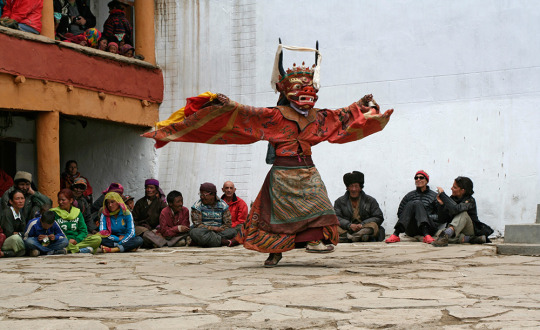
Meeting the Changpa Nomads: Experiencing Nomadic Life in Spiti Valley
Nestled amidst the majestic Himalayas, Spiti Valley is a land of unparalleled beauty and cultural richness. As one explores the enchanting landscapes and interacts with the local communities, there's an opportunity to delve deep into the heart of this region's unique way of life. Recently, I embarked on a journey to Spiti Valley, where I not only got a chance to witness the breathtaking scenery but also had the privilege to meet the Changpa nomads, who have been preserving their nomadic lifestyle for generations. Join me in this immersive adventure as we explore the mesmerizing Spiti Valley, and along the way, discover some fascinating Spiti Valley tour packages Spiti Valley Tour Packages that can make your trip equally remarkable. Additionally, for those interested in the local culture and crafts, we'll also touch upon some great places to shop in Spiti Valley Places To Shop In Spiti Valley.
A Glimpse into the Nomadic Lifestyle
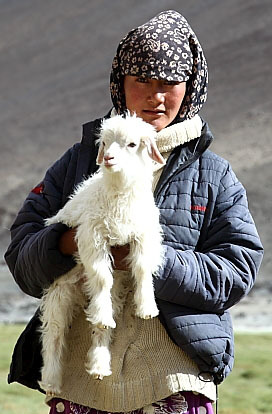
The Changpa people are a semi-nomadic Tibetan ethnic group that have called the high-altitude regions of Ladakh and the Spiti Valley their home for centuries. These nomads are primarily pastoralists, relying on their herds of yaks, goats, and sheep to sustain their way of life. The seasonal migration patterns of the Changpa are a well-choreographed dance with the changing seasons – they move to higher pastures during the warm months and descend to lower altitudes as winter approaches.
Embracing the Changpa Hospitality
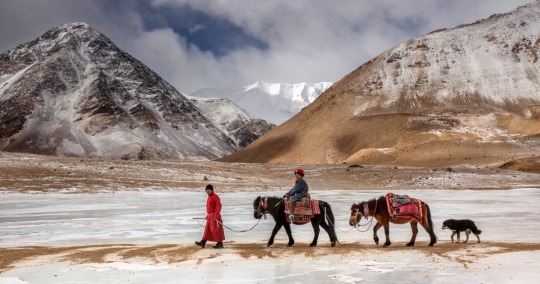
As I embarked on a journey to experience this unique way of life, I was welcomed with open arms by the Changpa nomads. Their hospitality knows no bounds, as they shared their tents, meals, and stories with me. The traditional tents, known as 'rebo,' are woven with yak hair and are surprisingly warm, even in the chilly mountain nights. Sitting around a crackling fire, I had the privilege of listening to tales of their ancestral traditions, the challenges they face in this modern age, and their unwavering bond with their animals.
The Rhythm of Nomadic Life
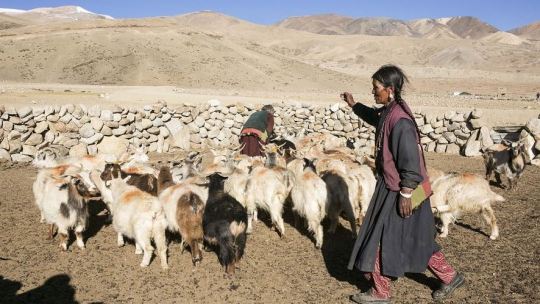
A day in the life of a Changpa nomad is a symphony of simple yet essential tasks. The crack of dawn marks the beginning of a routine that revolves around the well-being of their herds. Milking the yaks and goats is a daily ritual, producing the precious milk that is transformed into butter, cheese, and other sustenance. The nomads' intricate knowledge of the land is awe-inspiring – they can read the signs of nature to predict weather changes, locate water sources, and find the best grazing grounds.
Preserving Traditions in a Changing World
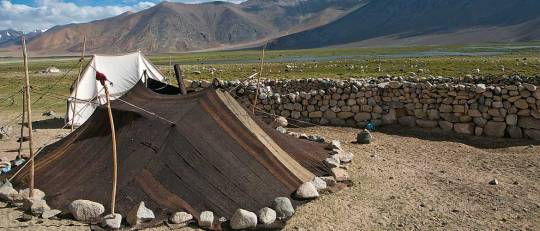
While the Changpa nomads have embraced certain aspects of modernity, such as solar panels to power their tents and some communication devices, they are fiercely determined to preserve their cultural heritage. Their traditional clothing, adorned with intricate designs and vivid colors, is a testament to their identity. Yet, like many indigenous communities, they face the challenges of a changing world – climate change affecting their grazing lands, economic pressures, and the allure of urban life drawing the younger generation away.
The Dance of Seasons: A Nomad's Calendar
In the embrace of the Spiti Valley's rugged terrain, the Changpa nomads have honed a profound understanding of the changing seasons. Their migratory lifestyle isn't just about survival; it's a harmonious dance with nature's rhythm. As spring breathes life into the barren landscape, the Changpa pack their belongings and guide their herds towards the alpine meadows. Here, wildflowers carpet the ground, and the air is tinged with the aroma of fresh grass.
Summer brings with it a bustling atmosphere as the nomads make the most of the warmer months. The yaks and goats thrive on the lush pastures, their milk flowing abundantly. During these months, the Changpa come together, establishing temporary settlements where a sense of community blossoms. Children play and learn alongside their parents, absorbing age-old skills and wisdom that textbooks could never teach.
With the advent of autumn, the Changpa begin their descent to lower altitudes. The landscape changes hues, painting the valley with warm shades of gold and crimson. The air turns crisper, hinting at the approaching cold. The nomads work diligently, gathering provisions for the coming winter. Their connection to the earth is tangible as they store food, prepare wool for crafting warm clothing, and reinforce their tents against the impending snow.
Winter is a time of quiet reflection and resilience. The Changpa retreat to their winter settlements, nestled in valleys where the snow offers insulation against the biting cold. Life slows down, and the focus turns inward. Stories are shared around fires, and traditions are passed down through generations. The yaks and goats are carefully tended, their thick fur providing both sustenance and warmth.
Lessons Learned and Shared
My time among the Changpa nomads was a humbling experience that left an indelible mark on my soul. Their harmonious coexistence with nature, their resourcefulness, and their unbreakable bonds with their animals offer profound lessons for the modern world. As I bid farewell to the rebo and the warmth of the campfire, I carried with me not just memories but a renewed perspective on what it means to truly live in harmony with the environment.
Meeting the Changpa nomads was an invitation to step outside the confines of our modern lives and immerse ourselves in a reality that is both timeless and illuminating. Their story isn't just about survival – it's a testament to the indomitable human spirit, the art of living in harmony with nature, and the beauty of traditions that transcend time. As the wind carried whispers of their songs and laughter, I left the Spiti Valley with a heart full of gratitude and a determination to carry their stories forward, so they may inspire others as they inspired me.
0 notes
Text
Queenmark’s Luxurious Cashmere Shawl and its origin

Where is the origin of cashmere?
China and Mongolia are the sources of cashmere Shawl. These two regions produce 90% of the Cashmere in the world. In addition to these, Afghanistan, Iran, Turkey, and Ladakh also produce cashmere. The greatest and finest cashmere in the world is thought to come from Ladakh.
Ladakhi Cashmere
In the Jammu and Kashmir province of Ladakh, at a height of 15,000 feet above sea level, sits the Changthang area. Just one-third of its 1600-kilometer length, which runs from west to east, is located in India. The region occasionally freezes at -40 degrees and is consequently cut off from the rest of the world for up to 9 months. However, despite these challenges and sufferings, the local Changpa tribe has perfected the art of surviving here while maintaining their traditional way of life.
Goats are the source of cashmere. The Changpa tribe of Buddhists in Ladakh is the owner of these rare cashmere goats. A small herd of Capra Hircus goats are raised by the Changpa tribe as their primary source of income. They have done this for 500 years. This wandering clan gives its goats the greatest care possible. It raises them primarily for their wool rather than just for their milk and meat.
Camel hair goat
Goats used for cashmere in the Ladakh region
This region of the planet has the easiest way of life. The rest of the world's changing tendencies, though, don't worry them as much. And they have been in this circumstance for the past 400 years. The Changpa tribe has consistently adhered to its own way of life, religion, and beliefs.
How does one obtain cashmere?
Mid-spring is the best time to collect cashmere shawl and wrap because it is when goats naturally shed their wool. From the end of March through May, it begins. The animal must shed the wool during this time due to hormonal changes in the body. To shed some of this warm fleece, the goat rubs itself against rough surfaces. The animal is handled responsibly, and experts use specialized combs and instruments to remove the wool from its body. When all of the wool has been obtained, it is sorted finely. This regionally known fleece, known as "Asli Tus," is manually gathered and sold to merchants who further process it.
Even though there is a rising global demand for Kashmiri Cashmere wraps and scarves, the quality has never been compromised. The Ladakh-sourced fiber is always pure and comes from the same Changthangi goat.
#cashmereshawls#printedshawls#shawlandwrap#wintershawl#womenshawls#shawlsforwomen#women’sscarf#Kashmirishawl
0 notes